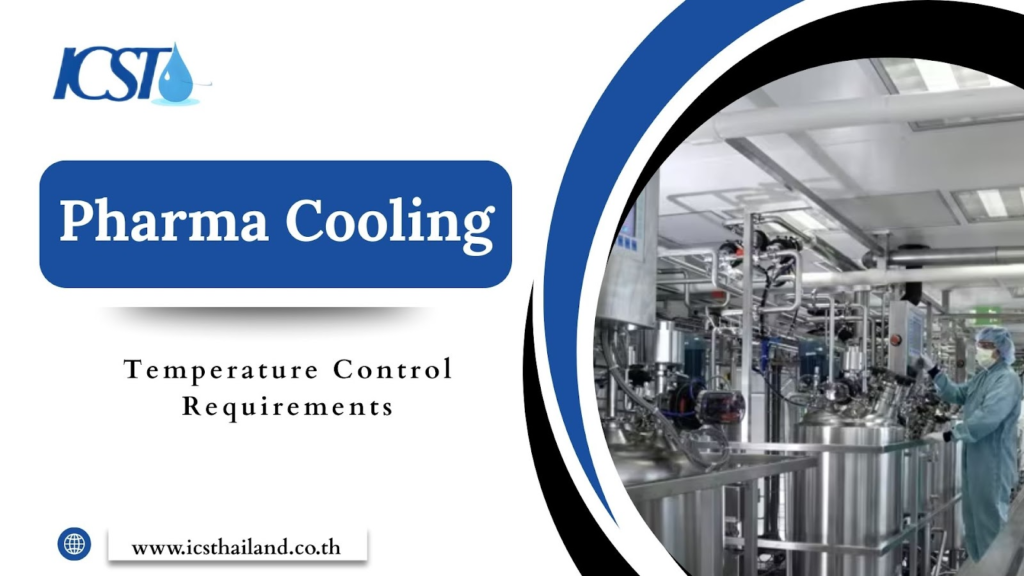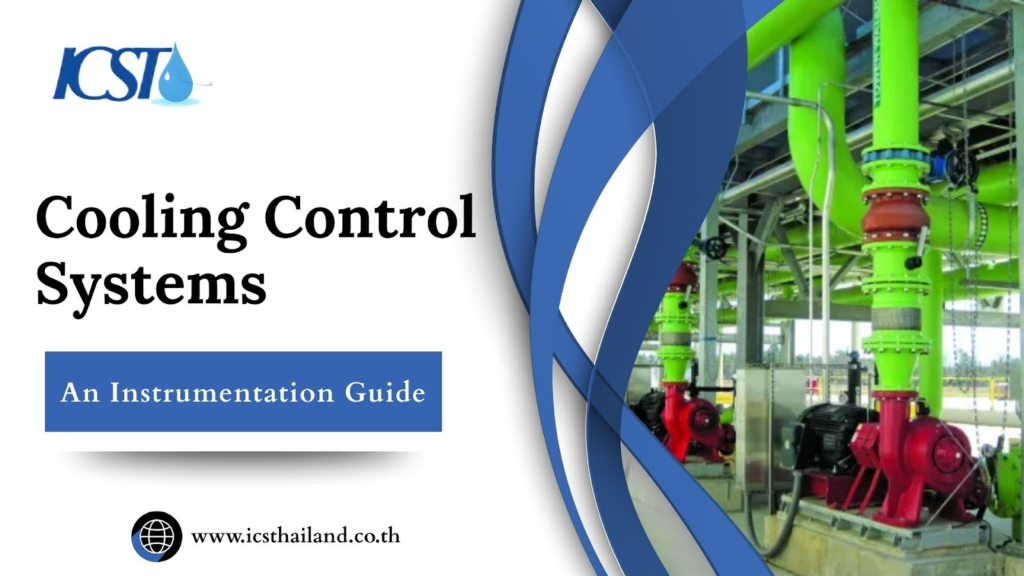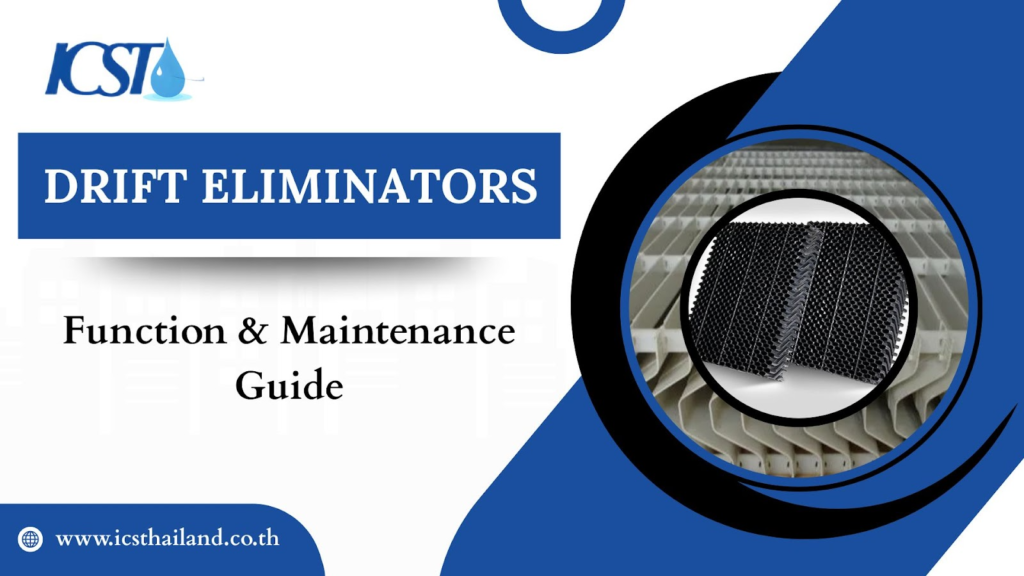Industrial cooling systems power the backbone of modern manufacturing, from pharmaceutical production to steel processing. These complex networks of pumps, pipes, and heat exchangers maintain optimal temperatures for critical operations across countless facilities.
Every year, industrial accidents related to cooling systems result in serious injuries, environmental incidents, and costly operational disruptions. The risks span from chemical exposure during water treatment to mechanical hazards from rotating equipment, electrical dangers from high-voltage components, and the ever-present threat of confined space incidents.
At ICS Thailand, we understand that reliable cooling solutions must be built on a foundation of safety excellence. That’s why we prioritize implementing robust safety protocols for industrial cooling systems. Our commitment extends beyond delivering efficient systems to supporting the safe, sustainable operations that keep your facility running smoothly.
Table of Contents
ToggleWhy Safety Protocols Are Your Ultimate Shield
Protecting Human Life
The main goal of any safety protocol is to ensure the well-being of individuals. What specific risks do cooling system workers face daily?
- Chemical exposure from water treatment chemicals, refrigerants, and cleaning agents can cause burns, respiratory issues, or long-term health effects.
- Mechanical injuries from rotating equipment, high-pressure components, and moving parts can result in cuts, crushing injuries, or amputations.
- Confined space dangers in cooling tower basins, sumps, and enclosed areas where oxygen deficiency or toxic atmospheres can be fatal.
Ensuring Operational Continuity & Asset Protection
Safety incidents don’t just harm people; they devastate business operations. How do safety failures impact your bottom line? They lead to costly downtime, legal penalties, and damage to your reputation. Investing in proactive safety measures not only protects your team but also ensures long-term business stability and success.
- Equipment damage from improper maintenance or emergency situations that require expensive repairs or replacements
- Fines and penalties for non-compliance that could amount to hundreds of thousands of dollars
- Insurance premium increases and potential coverage limitations following incidents
Regulatory Compliance & Legal Liability
What compliance requirements apply to cooling system operations? It’s crucial to ensure proper maintenance and regular inspections to prevent costly fines and downtime.
- Occupational safety standards that mandate specific procedures for confined space entry, lockout/tagout, and chemical handling
- Environmental regulations governing chemical storage, spill prevention, and waste disposal
- Industry-specific codes for pressure vessels, electrical systems, and mechanical equipment
- International standards for facilities operating across multiple jurisdictions
Cultivating a Safety Culture
Long-term success requires embedding safety into every aspect of operations. A proactive safety culture creates sustainable improvements that extend far beyond cooling systems, influencing every aspect of facility management and creating a competitive advantage through operational excellence.
Key Safety Protocols for Industrial Cooling System Operation
Daily operations present numerous opportunities for incidents if proper protocols aren’t followed. Conducting routine equipment inspections ensures potential risks are identified and addressed promptly.
Pre-Operational Checks & Start-up Procedures
Before energizing any cooling system, thorough inspections prevent most operational hazards. These critical checks identify potential problems before they become dangerous:
- Visual inspections of all piping, connections, and equipment for signs of leaks, corrosion, or damage
- Valve position verification to ensure proper system configuration and flow paths
- Safety interlock testing to confirm emergency shutdown systems and protective devices function correctly
- Chemical level checks to verify proper water treatment levels and identify potential over-treatment conditions
- Area clearance to ensure work areas are clear of personnel and obstacles before equipment startup
Routine Monitoring & Performance Oversight
Continuous monitoring helps identify potential issues early, preventing them from turning into safety hazards. Regular attention to key parameters ensures systems operate efficiently and reliably.
- Temperature tracking to detect heat exchanger fouling, flow restrictions, or refrigerant issues
- Vibration analysis of rotating equipment to identify bearing problems, imbalance, or misalignment
- Water quality testing to ensure proper chemical levels and prevent corrosion or biological growth
Emergency Shutdown Procedures
When issues arise, a quick response is essential to prevent them from escalating into major incidents. Operators should be equipped with clear protocols and the right tools to address emergencies efficiently.
- Immediate isolation of affected equipment using emergency stops and isolation valves
- System depressurization following established procedures to safely release stored energy
- Personnel evacuation from hazardous areas using predetermined routes and assembly points
- Emergency communication to notify management, maintenance, and emergency responders
- Documentation of incident details for investigation and corrective action
Personal Protective Equipment (PPE) for Operators
Proper PPE provides the last line of defense against hazards. Different tasks require specific protective equipment based on exposure risks and working conditions, including chemical-resistant gloves for handling treatment chemicals, safety glasses for splash protection, and hard hats for overhead hazards.
Essential Safety Protocols for Industrial Cooling System Maintenance
Maintenance tasks in cooling system operations often carry the highest risk exposures, making worker safety a top priority. Implementing proper lockout/tagout procedures, providing comprehensive training, and ensuring the use of personal protective equipment (PPE) are critical to minimizing risks.
Lockout/Tagout (LOTO) Procedures
Energy isolation is essential to preventing serious maintenance injuries. This is particularly important in cooling systems. They also ensure it cannot be re-energized during maintenance.
- Multiple energy sources, which include electrical power, stored hydraulic pressure, compressed air, and potential energy from elevated components
- Unexpected startup that can cause crushing injuries, chemical releases, or electrical shock
- Complex isolation points requiring coordination between multiple systems and utilities
Proper LOTO implementation requires identifying all energy sources, using standardized lockout devices, and maintaining locks until work completion.
Confined Space Entry Protocols
Cooling tower basins, sumps, and enclosed heat exchangers pose serious confined space hazards. These areas often lack proper ventilation. Harmful gases can accumulate quickly. Limited access makes rescue efforts challenging.
- Atmospheric hazards from oxygen deficiency, toxic gases, or flammable vapors
- Engulfment risks from water, chemicals, or loose materials
- Communication difficulties that delay emergency response
Safe confined space entry requires atmospheric testing, continuous ventilation, trained attendants, and emergency rescue equipment.
Chemical Handling & Water Treatment Safety
Water treatment chemicals can be hazardous during handling and use. Implementing safety measures is crucial for reducing risks. Facilities should provide protective equipment and thorough training.
- Proper storage in designated areas with secondary containment, appropriate ventilation, and separation of incompatible chemicals
- Emergency equipment such as eyewash stations, safety showers, and spill cleanup materials is positioned at strategic locations.
- Training programs covering chemical hazards, first aid procedures, and emergency response
Material Safety Data Sheets (MSDS) must be readily available for all chemicals, providing critical information about hazards, handling procedures, and emergency treatment.
Fall Protection
Cooling tower maintenance involves working at heights. Use harnesses, guardrails, and anchor points. Prioritize safety to prevent accidents.
- Guardrails and barriers around elevated platforms and walkways
- Personal fall arrest systems, including harnesses, lanyards, and anchor points for work beyond protected areas
- Ladder safety with proper setup, three-point contact, and fall protection for extended ladder work
- Platform inspection to verify structural integrity before use
Fall protection equipment requires regular inspection and replacement according to manufacturer specifications.
Electrical Safety
Cooling systems contain high-voltage components, posing risks of electrocution and arc flashes. Proper safety measures are essential during maintenance. Staff must utilize insulated tools and wear appropriate protective gear.
- De-energization using proper lockout/tagout procedures before beginning work
- Qualified personnel with appropriate training and certification for electrical tasks
- Arc flash assessment to determine hazard levels and required PPE
- Insulated tools and equipment rated for the voltage levels present
Only qualified electricians should perform electrical maintenance, and all work must follow established electrical safety standards.
Mechanical Hazard Awareness
Rotating equipment poses significant injury risks during maintenance. Proper precautions are essential to prevent harm. Use lockout/tagout procedures to isolate energy sources. Ensure all moving parts are secured before work begins.
Provide workers with the right tools and protective gear. Training and awareness are key to maintaining a safe environment.
- Complete shutdown and lockout of all rotating equipment before maintenance
- Guard installation before re-energizing equipment after maintenance
- Secure work positioning to prevent contact with pinch points and moving parts parts
Training, Competency & Continuous Improvement
Effective safety protocols require skilled, well-trained personnel. Comprehensive training programs are the foundation. They build knowledge and ensure consistency. Ongoing training promotes continuous improvement. It helps teams stay prepared and focused on safety.
- New employee orientation covering facility-specific hazards, emergency procedures, and safety expectations
- Task-specific training for each type of work performed, including hands-on practice with safety procedures
Certification & Competency
Certain activities require specialized certification or demonstrated competency. Critical certifications include confined space entry, forklift operation, crane operation, and electrical work qualifications based on job requirements and regulatory standards.
Regular Safety Audits & Reviews
Continuous improvement depends on regular safety performance assessments. They provide actionable insights to enhance safety measures.
- Systematic inspections of facilities, equipment, and procedures to identify hazards and non-compliance
- Near-miss analysis to identify root causes and reduce the risk of future occurrences
- Performance metrics tracking leading and lagging indicators of safety performance
- Corrective action tracking to ensure identified problems receive timely resolution
Audit findings must result in concrete action plans with assigned responsibilities and completion dates.
Documentation, Record-Keeping & Emergency Preparedness
Proper documentation supports both daily operations and emergency response. What records are essential for safe cooling system management?
Maintaining Detailed Records
Comprehensive documentation enables effective decision-making and regulatory compliance. How should facilities organize critical information?
- Operational logs recording system parameters, chemical additions, and abnormal conditions
- Maintenance records documenting completed work, parts replacement, and equipment condition
- Training records showing individual competencies and certification status
- Safety incidents, including near-misses, injuries, and environmental releases
- Equipment documentation, such as manuals, drawings, and safety data sheets
Records must be readily accessible to personnel who need the information for safe operations.
Conclusion
We’ve explored the essential elements of maintaining safe industrial cooling systems. It truly boils down to this: Safety Protocols for Industrial Cooling Systems aren’t just about ticking boxes. They’re absolutely crucial for protecting your people, your valuable equipment, and even your company’s good name.
We covered vigilant daily operations, meticulous maintenance, non-negotiable ongoing training, and why robust documentation is a lifeline. These aren’t just “nice-to-haves.” Embracing this proactive approach means less downtime, saved money, and a truly secure workplace.
Looking to elevate your cooling system’s safety? Don’t hesitate to contact ICS Thailand. We’re here to offer expert guidance and tailored solutions that fit your facility perfectly.
Frequenly Asked Questions
What are the main hazards in cooling systems?
Key hazards include chemical exposure, mechanical injuries from rotating equipment, electrical risks, and dangers associated with confined spaces like oxygen deficiency or toxic gases.
What are confined space entry dangers?
Dangers include oxygen depletion, toxic gases, engulfment risks, and difficult emergency exit.
How do you ensure chemical handling safety?
Ensure safety through proper storage with secondary containment, strict handling procedures with PPE, readily available emergency equipment, and thorough training on chemical hazards.
What are the safety standards for cooling towers?
- Hard Hats/Helmets: For vital overhead protection.
- Non-Slip Boots: Secure footing on wet or uneven surfaces.
- Full-Body Harness: Critical fall protection for elevated work.
- Respirators/Masks: Safeguard against airborne hazards.
- Safety Goggles: Shield eyes from splashes and debris.
- Protective Gloves: Essential hand defense from chemicals and cuts.
What are the safety precautions for industrial air coolers?
- Electrical Lockout: Disconnect and lock out power before any service.
- Clean Water: Regularly disinfect reservoirs to prevent microbial growth.
- Stable Placement: Install units on level, load-bearing surfaces.
- Safe Chemical Use: Handle chemicals with PPE and proper ventilation.








